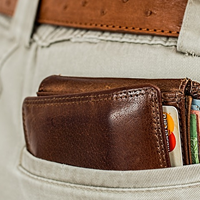One of the most common questions we get asked is why the profit per the accounts differs from the taxable profit, whether a sole trader, partnership or a company.
Here we look at some of the more common adjustments below:
Disallowable expenses
When calculating business profits there are a number of costs that the business suffers in any given year which, although should be deducted when calculating profits for accounting purposes, need to be added back to determine taxable profits.
Below are the four major categories:
Client entertaining
As a general rule entertaining clients (or potential clients), as well as general business contacts, is not an allowable expense for tax purposes and needs to be added back to the accounting profits to calculate taxable profits of a company.
If, for example, accounting profits were £10,000 in a given accounting period, with £1,000 of client entertaining, the taxable profits for that period would be calculated at £11,000 – assuming no other adjustments were required.
Fines and penalties
Any fines or penalties incurred where a sole trader or company has fallen foul of rules are not allowable costs for tax purposes. As such these need to be added back to profits when computing taxable profits.
Most common types of fines a business could suffer would be parking fines and late filing or payment fines.
Depreciation charge
Where a sole trader or a company buys an asset which is considered to have a life longer than one year, this asset is normally capitalised for accounting purposes and taken to the balance sheet.
This asset is then written off against the profit figure by a process of depreciation over the life of the asset.
For example, a laptop costing £3,000 may be considered to have a life of 3 years at the time of purchase, as such in the accounts the depreciation charge will be £1,000 per year. After the 3 years the value of the laptop on the balance sheet would be £Nil.
The £1,000 annual depreciation would be a disallowable cost for tax purposes in each of the 3 years.
The company would instead receive tax relief for the laptop by virtue of the annual investment allowance, discussed next.
Annual Investment Allowance / Capital Allowances
The Annual Investment Allowance is a type of Capital Allowance – Capital Allowances are the mechanism by which capital assets attract tax relief.
For tax purposes you would take the accounting profit then deduct the Annual Investment Allowance in order to arrive at taxable profits.
Taking the example of the laptop discussed above, this would usually qualify for the Annual Investment Allowance and as such the full cost would be allowable for tax purposes in the year of purchase.
Therefore, if the profits of the company were £10,000 after adding back depreciation, then £3,000 would be deducted to produce taxable profits of £7,000.
Losses
Where a sole trader or company has made a loss in the previous period (or potentially even the preceding period) this may be carried forward to the current accounting period in computing the taxable profits.
For example, if the business had made a taxable loss of £2,000 in the previous period which was carried forward and £10,000 of taxable profits in the current period, the overall taxable profits would be £8,000.
If you would like any further information on this topic please get in touch.

